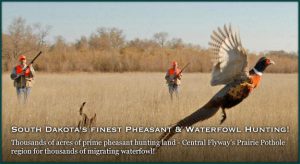WHY DID BROTHERS CHRIS HUMBKE AND DIETRICH HUMBKE (WITH HIS FAMILY) LEAVE GERMANY AND SETTLE IN SOUTH DAKOTA IN THE 1880’S?
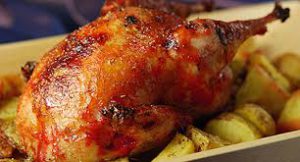
“THE GERMAN IS LIKE A WILLOW.
NO MATTER WHICH WAY YOU BEND HIM,
HE WILL ALWAYS TAKE ROOT AGAIN.”
– ALEXANDER SOLZHENITSYN –
Although Germans immigrated to North America for political, religious and conscription reasons, it seems that the availability of land and the opportunity to prosper as farmers were the main reasons. Industrialization was increasing in Europe and the rural way of life was disappearing as people were forced to move to cities.
The HUMBKE brothers Dietrich and Chris left Windheim, Germany for the free farm land available in America and to avoid compulsory Prussian military service for themselves and their sons.
After landing in New York on Aug 4th, 1883 Dietrich, Louise and 4 children had intended to go to White Lake, South Dakota where brother Chris had already settled in 1879. Plans changed and they settled in Buffalo Centre, Iowa for a year. In 1884 they continued on to White Lake, South Dakota where they homesteaded for the next 7 years.
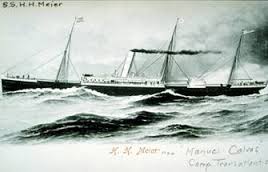
Dietrich’s oldests son (15 yr. old Ernest Sr.) had crossed the Atlantic alone (3rd class) on the H.H. Meier, arriving in New York on May 12, 1883. The H.H. Meier carried 84 1st class, 32 2nd class and 1,000 3rd. class passengers. A third class ticket cost about $30 (equivalent to about $600 US in 2016) was called “steerage” because before returning to Europe, the facilities for passengers were removed to make room for a cargo of cattle (steers) to be sold in Europe. You can imagine the smell after a 17 day trip!
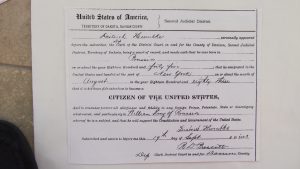
On September 19, 1883 in Davidson, South Dakota, Dietrick filed for intention to become a US citizen and, for $10, applied to homestead the SW 1/4 of Section 15, Township 102N, Range 65W (7 m. S. & 5 m. E of White Lake).
Life on the South Dakota homestead was extremely rough. Everything was moved by a pitchfork or scoop and required a tremendous amount of hard physical labor. First a sod home with a fire break was built and land was broken for a garden patch. Luise and the 3 older girls (Sophie,Wilhelmine and Mary) looked after the garden and helped the men. Dietrich and his teenage son (Ernest Sr.) built their sod home; created a fire break; dug a well by hand; look after the animals; and begin breaking land for the growing corn or wheat.
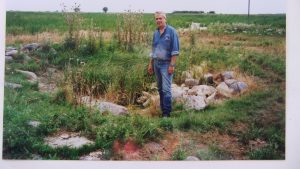
I am not sure how the family felt, but in July of 1999 when I stood on what was left of where they had lived, a total sense of desolation came over me and the realization, that the thought I would have had was, ‘I had made a great mistake bringing my family here‘. It was flat with few, if any, trees and resembled a swamp. After talking with locals I found out its highest value was for hunting pheasants and that rich Eastern American hunters would buy the land for just that purpose for years to come.
Despite this, the HUMBKE family built a sod house on the rocks that still outline where structures once stood, and eked out a living by way of a large garden, corn or wheat crops, some pigs, cows, horses, chickens and of course wild pheasants. ‘The family bent like the willows and grew roots for 6 year’s.
Each homesteader could register to buy 160 acres of land for $10. In return for establishing some kind of home on the land; putting in a few acres of crops; living there for five years; and paying another $4; the land was theirs. I believe they wanted to sell it and move 270 miles East to the Woden/Titonka area of Iowa.
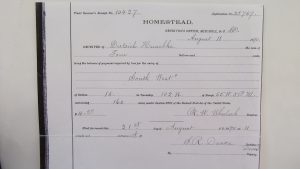
In 1891 the County paid him $12 for acre on which to build a school, but there is no evidence that a school was ever built. On Apr. 12, 1892 he sold the other 159 acres of his homestead to Nicholas SCHALTES and Charles WINTERS of Kossuth, Iowa for $1,000.
There is evidence that the family went to the Buffalo Centre and German Valley areas in Iowa (270 miles straight East of White Lake) on a number of occasions and socialized with other Germans there. There was an active German Lutheran Church at German Valley, and both the land and climate were much better for growing corn and wheat.
During their 7 years in South Dakota there was very little rain and the closest was 3 miles away. The driving of the cows and horses to water each day was just one of the many tasks necessary to survive.
Activities indicate that Diedrich’s family move from South Dakota back to Iowa at the earliest opportunity in 1891. Chris remained in White City with his wife Marie and their daughter, Louise HUMBKE.
Diedrich and Louise had two more girls who were born at White Lake – Alvina on April 14, 1885 and Emma on January 29, 1890.
The next blog will cover the family’s life in Iowa until 1902.
